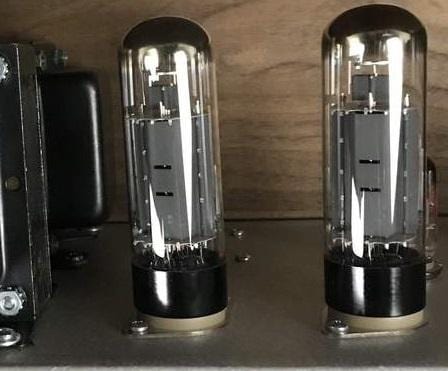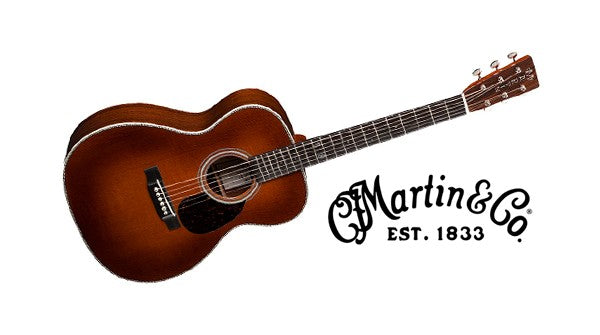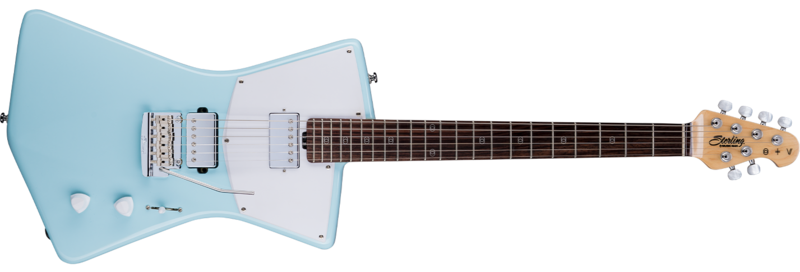Your Cart is Empty
What You Need to Know About Low Wattage Tube Amps
November 12, 2019 5 min read

Guitar amplifiers don’t simply amplify the input they receive from your guitar’s pickups, they also color the guitar’s sound, making the amp you use an instrument in its own right. In this article, we will take a closer look at exactly what is behind the classic tube tone that has inspired guitarists for generations.
Iconic Tube Amps from our Friends at ReverbTube amps are loved for their warm, rich, and organic tone, which is detectable whether they are played clean or overdriven. The tonal character of tube amps is legendary, going back to the beginnings of electric music and the first British and American amps introduced in the 1950‘s and 60‘s by companies like Vox, Supro, Fender, and Marshall. It is from these original amp companies, originating in either the US or the UK, that amps have come to be classified as either British or American in their tonal characteristics.
Generally speaking, the British tone features aggressive and gritty mids, making the tone meaty and raw, with a lot of sustain. This aggressive and gritty tone has been featured in a lot of musical styles, from Clapton and The Who to Queen, U2 and Radiohead.
The American sound is generally fuller, with a looser bottom end, creating a dense and well-rounded sound. The power tubes used in American amps deliver a brighter tone, with lots of high end sparkle and has been an important ingredient in the history of American music, especially for blues, country and rock guitarists like Neil Young.
Signal Clipping, Harmonics and Compression
Guitar amplifiers don’t simply amplify the input they receive from your guitar’s pickups, but they also color the guitar’s sound, making the amp you use an instrument in its own right. Over the decades guitarists have learned how to use their amps to get the sounds that they hear in their heads, reinventing modern music in the process.
The guitar sound that we usually associate with modern music arose in the 1960‘s when guitar players started cranking low-wattage tube amps, pushing or ‘over-driving’ the power tubes, creating the first distorted and ‘over-driven’ tones. As the name suggests, distortion is an alteration of the original signal and is the result of a phenomenon called signal clipping, which appears when the signal’s peak is too high for the device that is trying to process it.
In a solid state amp, ‘hard’ signal clipping occurs, which is when the guitar’s signal is squared off, resulting in a harsh type of distortion that is useful in various types of metal music, but is not desirable in other forms of music. When a low wattage tube amp is cranked, the result is known as ‘soft’ signal clipping, which is when the clipped signal is actually rounded off, creating a softer, fuller and less-harsh over-drive tone that is extremely saturated and full of harmonics.
Image Courtesy of Wikipedia

Soft ‘asymmetrical’ signal clipping creates even-order harmonics that give your over-driven tube amp a fatter, fuller, and warmer tone. This fat and heavily saturated amp tone is also the result of compression. A highly compressed signal reduces volume level differences, which is what makes tube amps more responsive. This characteristic of a cranked tube amp allows you to go from a clean tone to a distorted tone simply by attacking the strings harder or turning the volume control on your guitar up and down.
This is one of the major differences between solid state and tube amps. Whereas solid state amps are dynamic, allowing you to change the volume of what you play by attacking the strings harder, tube amps are responsive to touch, giving the player more control of their tone simply by altering the way they attack the strings. This is one of the reasons why tube amps are so popular among blues players whose touch is a major aspect of their playing.
Why Low-Wattage Tube Amps are Louder than Solid State Amps
Tube amps are often perceived as being louder than solid state amps and this is because they actually are. A low wattage tube amp, of say 10 or 15 watts, will actually sound as loud or louder than a solid state amp of 50 watts or more. Speaker impedence, which is the amount of resistance that a speaker offers to the current that flows through it, actually depends largely on the nature of the frequencies that the speakers are reproducing, and the hard clipped signals produced by solid state amps strongly reduce the available power, giving them higher speaker impedance and less overall power.
Tube amps, on the other hand, faithfully produce between 80% and 90% of their power regardless of the frequencies being produced by your guitar. Also, the full, smooth and fat over-driven tone of a cranked tube amp are less harsh and more agreeable to the ear, making them more tolerable to listen to at high volume than solid state amps. In this way tube amps are both actually and subjectively louder than solid state amps.
Tone Tips From Our Friends at Reverb
Attenuators, Power Reduction Circuits and Achieving Saturated Tone at Low Volume
The difference in power and signal clarity is one of the main reasons why you will find 5W, 10W, and 15 Watt tube amps priced in the same neighborhood as high quality 50, 60 and 100 watt solid state amps. However, for some players, the fact that you have to push the valves in your power amp at very high volume to get the saturation that modern lead players are looking for makes tube amps impractical. This is why many amp manufacturers have outfitted their tube and valve amps with power reduction switches and attenuators that allow you to push the power tubes at lower volume, essentially making it easier to overdrive the amp.
Attenuators are devices that soak up some of the power of the amp that would otherwise be sent to the speakers and they can either be external,or built into the amp, as they are in models by Orange, EVH and Blackstar just to name a few. By soaking up the power, the attenuator allows you to overdrive the valves at lower volume, giving you the fat, super saturated tone that modern players are looking for at relatively low volume.
Conclusion
Low Wattage tube amps are highly versatile tone machines that allow you to enjoy an incredible variety of tones and amazing clarity at competitive prices. When you really understand the quality of tone and the volume that a low wattage tube amp can produce, it is much easier to see the value.
To listen to a classic tube amp in action, check out our Demo of Supro's Black Magic Reverb.
Leave a comment
Comments will be approved before showing up.
Also in Adirondack Guitar News and Blog
Browse Our Store
Recent Articles
- Left Handed Guitarists Who Learned to Play Right Handed July 13, 2021
- The History and Importance of the Martin 28 Style July 13, 2021
- Adirondack Guitar Profiles: St. Vincent July 13, 2021
- Adirondack Guitar Profiles: John Petrucci May 05, 2021
- How to Turn Your Music Skills into a Career March 30, 2021



